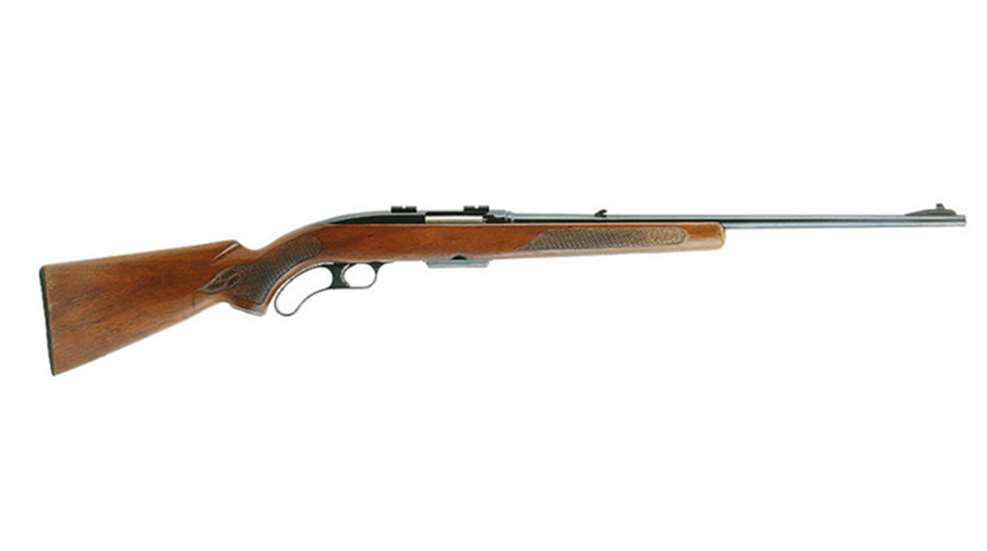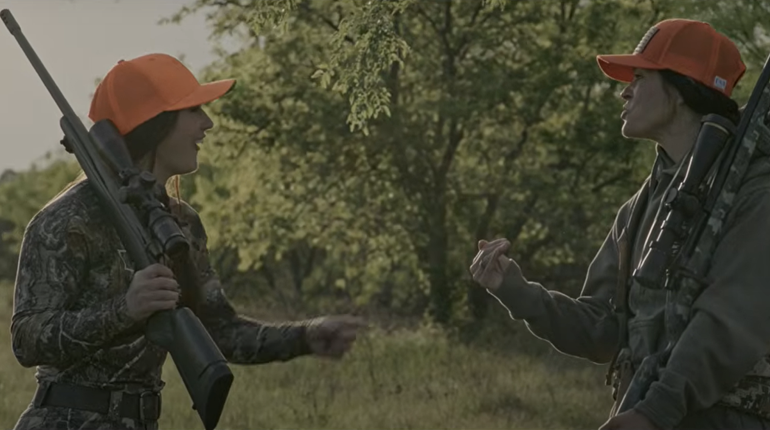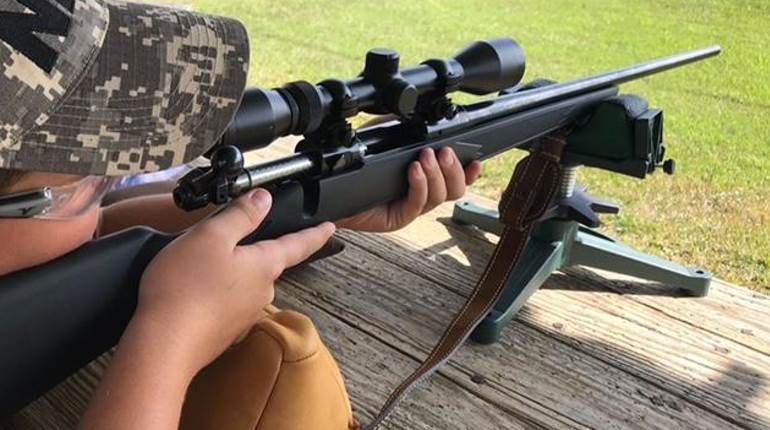
The name Winchester has been—and continues to be—associated with lever-action rifles. Yes, there were the Henry, Spencer, Burgess, Savage; even Browning and Ruger, but the big red W still is all about lever actions. After World War II, gun manufacturers scrambled to get back into peacetime production with guns largely geared toward sportsmen. Everything had to be modern; traditional was supposedly “out” and uncool. The Model 70 was a good seller, but a lot of hunters pined for something with more punch and a flatter trajectory than a .30-30 but with better firepower than a bolt action.
Winchester’s ammunition division had taken interest in Springfield Armory’s T65 cartridge, and in 1952 renamed it the .308 Winchester when it was introduced commercially—two years before its acceptance as the 7.62 x 51 mm NATO. Winchester chambered the Model 70 Featherweight for the new cartridge in that year. The engineering boys began developing a more modern lever-action rifle, and in 1955 the Model 88 debuted, chambered in .308 Win.
The Model 88 was a completely new design in lever actions. It had no visible hammer; the bolt rotated when operated by the lever, locking up with three lugs just aft of the chamber similar to a bolt action. It fed from a 4-shot detachable box magazine. Its 22" barrel—a 19" carbine was available as well—had a featherweight profile leading to the rifle’s 7 1/4-lb. weight. Cartridges ejected from the side, allowing a scope to be mounted center over the bore. To cap it off the one-piece walnut stock with a pistol grip borrowed much of its lines from the bolt-action rifles of the day, sleek and fast-handling. Winchesters marketing guys even called it the “bolt action rifle with a lever.”
A year after its initial introduction Winchester included chamberings in .243 and .358 Win.—a year before including them in the Model 70. In 1963 the .284 Win. chambering was included in an effort to provide the flat trajectory of the .270 Win. in a short-action cartridge.
The Model 88 achieved its objective of providing bolt-action performance with lever-action handiness. It carried well in a saddle scabbard, but most of its popularity came from eastern hunters wanting better cartridge performance. Western hunters largely clung to their bolt-actions and continued their endless effort to have a rifle that shoots like a laser and hits like the hammers of hell.
Like many of the great Winchesters, the Model 88 had to suffer the indignity of the 1964 debacle. Unlike most of the Winchester guns, the Model 88 was spared some of the cast parts that turned purple when they were blued. The most notable change was a degradation of the quality of the walnut used in the stocks so they would accept the then-new impressed checkering. Carbine stocks (19" barrels) were sans any stock decoration.
The rifle had a steady run; some 280,000-plus copies were made from 1955 until its discontinuance in 1973. Hands-down favorite was the .308 Win. at 110,289 rifles made. Second in popularity was the .243 Win. with 74,294 produced. The 358 Win. edged out the .284 Win. with 35,636 vs. 35,330 rifles made respectively. In all, just 28,330 Model 88s were produced as carbines.
While it enjoyed—and continues today—a fairly loyal following, several Model 88 purchasers had some buyers’ remorse after they took it to the range. The Model 88 is a light, handy rifle, but touching one off, especially in .284 or .358 Win. rattled the teeth of shooters not used to dealing with the level of recoil generated by these cartridges. Too, the stock was rather minimalist in its dimensions, and the relatively small, hard buttplate tended to accentuate the recoil impulse. Another ding on the Model 88 was its trigger. Though it conveniently went along with the lever during its short-stroke travel, it was quite complex; nearly impossible to gunsmith into an acceptable condition.
In some ways the Winchester Model 88 was ahead of its time. There is no doubt it was an innovative design that melded power, accuracy, aesthetics and firepower into an almost ideal single rifle. Unfortunately, though, it was nearly twice the price of a Model 94 and about even with a bolt-action Model 70. Those things brought the death knell to the Model 88. Today the used market has prices ranging from $500 to $1,000, depending upon condition—actually something of a bargain for a classic old Winchester.





































